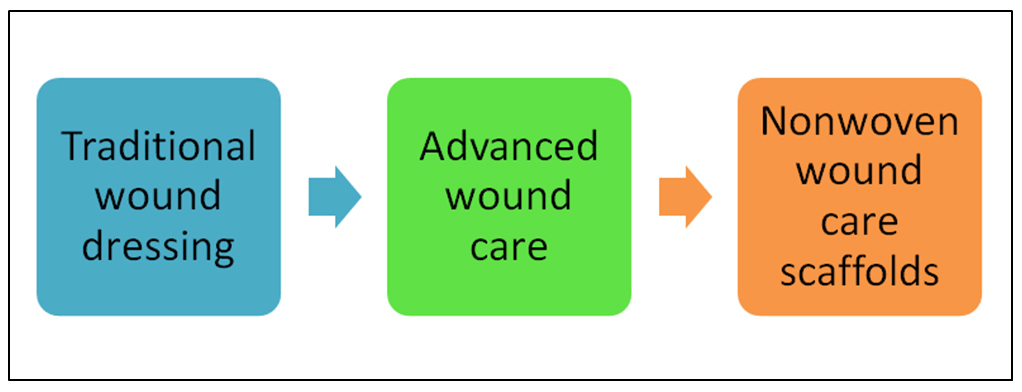1. Nguyen DT, Orgill DP, Murphy GF. The Pathophysiologic Basis for Wound Healing and Cutaneous Regeneration Biomaterials for Treating Skin Loss. Chap 4. In: Biomaterials for Treating Skin Loss. Cambridge/Boca Raton, FL, USA: Woodhead Publishing (UK/Europe) & CRC Press (US); 2009: 25-57. doi: 10.1533/9781845695545.1.25
2. Wikipedia, the free encyclopedia. Wound healing Web site. https://en.wikipedia.org/wiki/Wound_healing. Accessed November 29, 2016.
3. Harding KG, Morris HL, Patel GK. Science, medicine, and the future: Healing chronic wounds. BMJ. 2002; 324: 160-1633. doi: 10.1136/bmj.324.7330.160
4. Harcup JW, Saul PA. A study of the effect of cadexomer iodine in the treatment of venous leg ulcers. Br J Clin Pract. 1986; 40: 360-364. Web site. http://europepmc.org/abstract/med/3542001. Accessed November 29, 2016.
5. Percival SL, Bowler PG, Russell D. Bacterial resistance to silver in wound care. J Hospital Infection. 2005; 60(1): 1-7. doi: 10.1016/j.jhin.2004.11.014
6. Kittler S, Greulich C, Diendorf J, Koller M, Epple M. Toxicity of silver nanoparticles increases during storage because of slow dissolution under release of silver ions. Chem Mater. 2010; 22: 4548-4554. doi: 10.1021/cm100023p
7. Ormiston MC. Controlled trial of iodosorb in chronic venous ulcers. Br Med J (Clin Res Ed). 1985; 291(6491): 308-310. doi: 10.1136/bmj.291.6491.308
8. Habibi Y, Lucia L, Rojas O. Cellulose nanocrystals: Chemistry, self-assembly, and applications. Chemical Reviews. 2010; 110: 3479-3500. doi: 10.1021/cr900339w
9. Siro I, Plackett D. Microfibrillated cellulose and new nanocomposite materials: A review. Cellulose. 2010; 17: 459-494. doi: 10.1007/s10570-010-9405-y
10. Visakh P, Thomas S. Preparation of bionanomaterials and their polymer nanocomposites. Waste and Biomass Valourization. 2010; 1: 121-134. doi: 10.1007/s12649-010-9009-7
11. Klemm D, Heublein B, Fink HP, Bohn A. Cellulose: Fascinating biopolymer and sustainable raw material. Angewandte Chemie Int. 2005; 44: 3358-3393. doi: 10.1002/anie.200460587
12. Morin RJ, Tomaselli NL. Interactive dressings and topical agents. Clin Plast Surg. 2007; 34(4): 643-658. doi: 10.1016/j.cps.2007.07.004
13. Lloyd LL, Kennedy JF, Methacanon P, Paterson M, Knill CJ. Carbohydrate polymers as wound management aids. Carbohydr Polym. 1998; 37: 315-322. Web site. http://agris.fao.org/agris-search/search.do?recordID=US201302913136. Accessed November 29, 2016.
14. Mulder M. The selection of wound care products for wound bed preparation. Prof Nurs Today. 2011; 15(6): 30-36. Web site. http://www.pntonline.co.za/index.php/PNT/article/viewFile/563/850. Accessed November 29, 2016.
15. Harding KG, Jones V, Price P. Topical treatment: Which dressing to choose. Diabetes Metab Res Rev. 2000; 16(Suppl 1): S47- S50. doi: 10.1002/1520-7560(200009/10)16:1+<::AID-DMRR133>3.0.CO;2-Q
16. Morton LM, Phillips TJ. Wound healing update. Semin Cutan Med Surg. 2012; 31(1): 33-37. doi: 10.1016/j.sder.2011.11.007
17. Wittaya-areekul S, Prahsarn C. Development and in vitro evaluation of chitosan-polysaccharides composite wound dressings. Int J Pharm. 2006; 313(1-2): 123-128. doi: 10.1016/j.ijpharm.2006.01.027
18. Boateng JS, Matthews KH, Stevens HN, Eccleston GM. Wound healing dressings and drug delivery systems: A review. J Pharm Sci. 2008; 97: 2892-2923. doi: 10.1002/jps.21210
19. Zahedi P, Rezaeian I, Ranaei-Siadat S, Jafari S, Supaphol P. A review on wound dressings with an emphasis on electrospun nanofibrous polymeric bandages. Polym Adv Technol. 2010; 21: 77-95. doi: 10.1002/pat.1625
20. Gultekin G, Atalay-Oral C, Erkal S, et al. Fatty acid-based polyurethane films for wound dressing applications. J Mater Sci Mater Med. 2009; 20: 421-431. doi: 10.1007/s10856-008-3572-5
21. Vaseashta A, Erdem A, Stamatin I. Nanobiomaterials for controlled release of drugs and vaccine delivery. Mater Res Soc Symp Proc. 920; 2006: 143-148. Web site. https://www.cambridge.org/core/journals/mrs-online-proceedings-library-archive/article/nanobiomaterials-for-controlled-release-of-drugs-and-vaccine-delivery/A7B20086ED5E0DC405AF9AC53C103962. Accessed November 29, 2016.
22. Dai XY, Nie W, Wang YC, Shen Y, Li Y, Gan SJ. Electrospun emodin polyvinylpyrrolidone blended nanofibrous membrane: A novel medicated biomaterial for drug delivery and accelerated wound healing. J Mater Sci Mater Med. 2012; 23: 2709-2716. doi: 10.1007/s10856-012-4728-x
23. Losi P, Briganti E, Costa M, Sanguinetti E, Soldani G. Silicone-coated non-woven polyester dressing enhances reepithelialisation in a sheep model of dermal wounds. J Mater Sci Mater Med. 2012; 23: 2235-2243. doi: 10.1007/s10856-012-4701-8
24. Nguyen TTT, Ghosh C, Hwang S-G, Tran LD, Park JS. Characteristics of curcumin-loaded poly (lactic acid) nanofibers for wound healing. J Mater Sci. 2013; 48: 7125. doi: 10.1007/s10853-013-7527-y
25. Mateescu M, Baixe S, Garnier T, et al. Antibacterial peptide-based gel for prevention of medical implanted-device infection. PLoS One. 2015; 10(12): e0145143. doi: 10.1371/journal.pone.0145143






